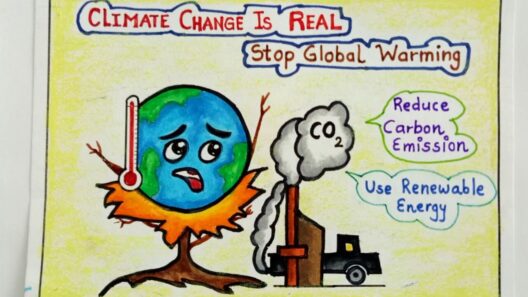Amidst the din of metropolitan life, street plays have emerged as a powerful medium for advocacy, specifically in the realm of environmental conservation. These ephemeral performances utilize the immediacy of public engagement to address critical issues, and none is more urgent than global warming. The intersection of art and activism provides a unique platform for dialogue, particularly when addressing a subject as grave and pressing as climate change. Through evocative narratives and compelling characters, street plays can shift perspectives and inspire action, even among the most indifferent audiences.
The phenomenon of global warming looms large over humanity’s collective consciousness. Disturbances in weather patterns, increased frequency of catastrophic natural events, and the inexorable rise in sea levels are but a few manifestations. The urgency of these phenomena is often overshadowed by the apathy that has permeated society. It is within this context that street plays become instrumental. They present an opportunity to engage with the public in meaningful ways, fostering a deeper understanding of environmental issues.
Street theatre conveys stories that resonate dynamically with passersby. In its raw and unfiltered form, it captures attention and piques curiosity. A well-executed street play can make complex scientific phenomena accessible to the layperson. This is essential when tackling a multifaceted subject like global warming, which can often be framed in overly technical language. By weaving narratives that illustrate the human impact of climate change, performers engender empathy, thereby motivating audiences to reflect upon their roles within the ecological framework.
Imagine a street play featuring characters from various walks of life, converging in a bustling urban setting. The protagonist, a young teacher, grapples with the stark reality of her students’ futures—lives potentially marred by climate-related catastrophes. Demonstrating the direct link between everyday actions and global consequences, the play poignantly illustrates how lifestyle choices, from plastic consumption to vehicle emissions, contribute to a much larger problem. Here, the theatrical context enables a visceral audience experience, allowing individuals to see themselves in the characters and their struggles.
One of the promising aspects of street plays is their capacity for community involvement. Local actors, ranging from seasoned thespians to amateur performers, can collaborate to tell regional stories. This not only fosters a sense of ownership and pride but also ensures that the narratives are culturally relevant. When audiences see their own realities mirrored on stage, the impact is magnified. The sense of belonging can be a catalyst for change, as people feel that they are not alone in their concerns. Together, they can confront the existential threats posed by climate change.
Moreover, street plays serve as a forum for the dissemination of information. Following a performance, discussions can ensue, allowing performers to engage directly with the audience. This interaction aids in clarifying questions and addressing misconceptions about global warming. Such dialogues can also spark interest in further exploration of the topic, motivating individuals to seek additional knowledge. Workshops on sustainability, local initiatives, and climate action can follow the performances, transforming spectators into activists.
The visual aspects of street plays are particularly significant. A striking backdrop, vibrant costumes, and powerful sound design can create an immersive atmosphere. This theatricality not only captivates attention but allows for more profound emotional engagement. For instance, a poignant depiction of a flood ravaging a community can leave an indelible mark on spectators’ minds. The visceral experience of witnessing the repercussions of global warming can be far more memorable than mere statistics presented in a lecture hall.
Furthermore, incorporating elements of humor and satire into street plays can augment their effectiveness. By utilizing comedic elements, performers can tackle serious topics without alienating audiences. This approach diffuses tension and makes complex themes more digestible. For example, a skit that parodies corporate greenwashing can invoke laughter while simultaneously critiquing the superficial measures taken by corporations in the face of climate reality. Thus, the performance enlightens while entertaining.
In recent years, the proliferation of climate strikes and youth activism has galvanised public interest in environmental issues. Street plays can harness this momentum by encouraging young performers to use their talents to advocate for their future. The act of creating and performing in a street play can empower youth, instilling a sense of agency that is often lacking in discussions of climate change. They can become not just the audience but the catalysts for change, armed with the knowledge and passion to challenge the status quo.
Ultimately, street plays offer a compelling avenue for addressing the imminent threat of global warming. The melding of art and activism cultivates an environment ripe for dialogue and reflection. Through character-driven narratives, community involvement, and interactive discussions, these performances can bridge the gap between knowledge and action. They promise a shift in perspective, compelling audiences to reconsider their roles in an increasingly warming world.
As our planet cries out for attention, it is imperative to recognize the unique potential of street theatre as an instrument of change. Artistic expressions hold the power to transcend barriers of understanding and perception, igniting curiosity and prompting societal shifts. In this light, the humble street play emerges not merely as entertainment, but as an essential medium for inspiring collective action against climate change. Through its vibrant tapestry of community, creativity, and conversation, street theatre heralds a future infused with consciousness and sustainability.







